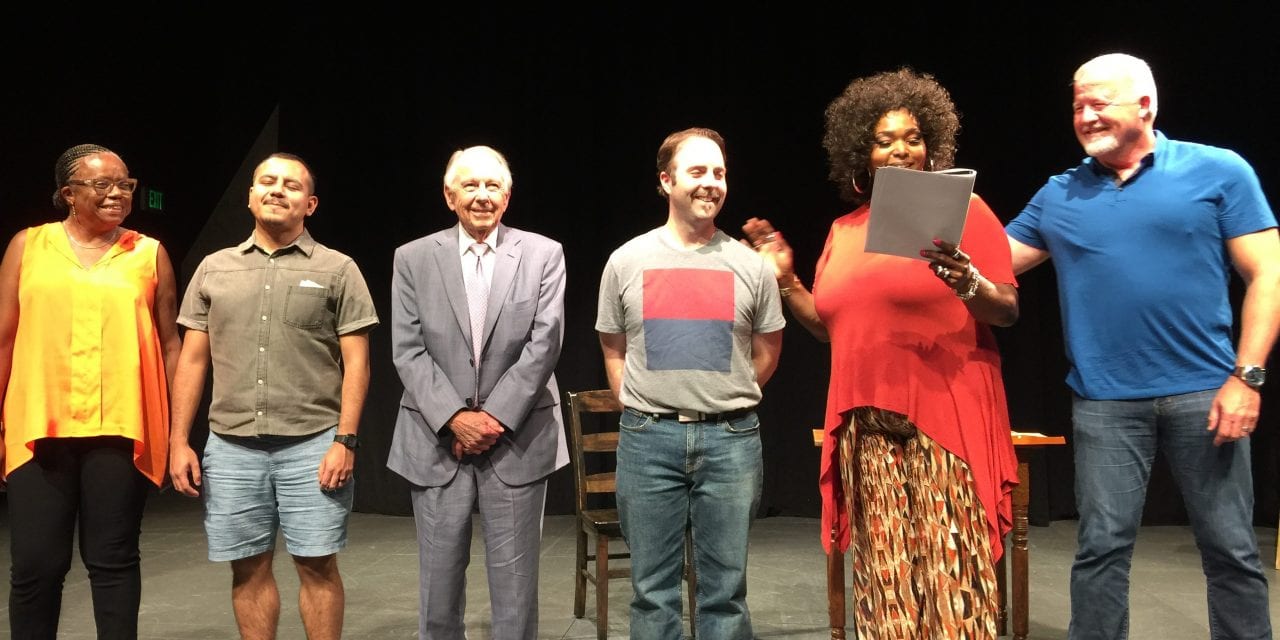Note: I have no interest in ruining anyone’s enjoyment of the play. You can read this review and not learn any information that would spoil the experience, except where clearly indicated.
In the spring of 2010, an Iranian playwright named Nassim Soleimanpour, whose work had been censored by the totalitarian government, sat down to write a piece — I (and he) hesitate to call it a play, exactly — called White Rabbit Red Rabbit. The gimmick behind it is intriguing, and has made it an international sensation: There is no director, a single actor, the barest of sets and lighting, and no costumes, except for what the actor (male or female, it doesn’t matter) chooses to wear. The actor has never seen the play before, nor read it; the script is presented to her in a sealed envelope, and she reads it aloud, in front of the audience, with the instruction merely to start on Page 1 and continue, no matter what, until the end. And then the next performance has an entirely different actor, repeating the process.
So, basically, it’s just like every conversation you’ve ever had at a cocktail party.
Only it’s not. The gimmick is just that — a gimmick, a “hook” that pulls you into Soleimanpour’s mind. A la The Crying Game and The Sixth Sense, the actor pleads with the audience (it’s in the script) not to reveal the play’s secrets (and I won’t — no major spoilers here, though you can stop reading from here until the last paragraph if you’re worried). It’s more magic act or standup than theater.
Except for one thing: White Rabbit Red Rabbit embodies in an essential way what theater tries most to be: A temporary community where everyone present is invested into the same experience. Soulimanpour is creating what the hippies called “a happening,” where nobody in the room knows exactly what comes next, but live in the moment. It’s a totally meta sensation, that changes at every show. (Last night’s public debut was performed by Liz Mikel, a big personality who seemed as nervous as some of the attendees; it was also her last performance in the role.)
(Don’t read this paragraph if you’re really worried about learning a particle too much of information.) WRRR has no real characters, no plot; there’s some audience participation; lots of humor; interaction in the broadest sense. It traffics more in ideas than the conventions of theater, and unfolds more as political lecture or cultural diatribe. I kept waiting to be truly shocked, to realize the secret is so juicy you want to keep it. I won’t say if that did or did not come, but I will say I eventually grooved to the gimmick.
(You can start reading again.) To call White Rabbit critic-proof isn’t really to point. It’s something else — audience-friendly. See it. Don’t tell anyone what you saw. And karma will bring it back on you. Peace out.
— Arnold Wayne Jones
Presented by Dallas Theater Center through July 1.
















